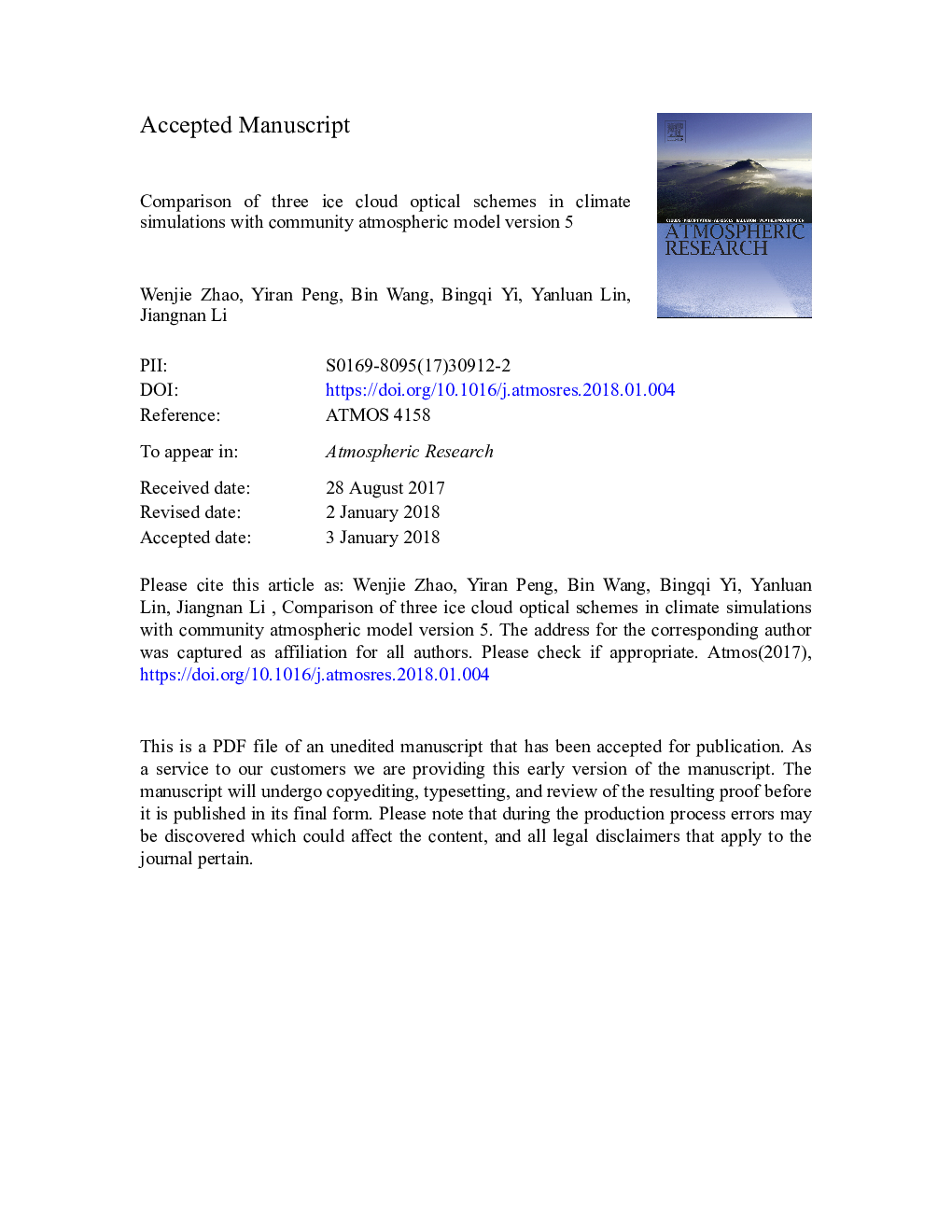| Article ID | Journal | Published Year | Pages | File Type |
|---|---|---|---|---|
| 8864720 | Atmospheric Research | 2018 | 59 Pages |
Abstract
A newly implemented Baum-Yang scheme for simulating ice cloud optical properties is compared with existing schemes (Mitchell and Fu schemes) in a standalone radiative transfer model and in the global climate model (GCM) Community Atmospheric Model Version 5 (CAM5). This study systematically analyzes the effect of different ice cloud optical schemes on global radiation and climate by a series of simulations with a simplified standalone radiative transfer model, atmospheric GCM CAM5, and a comprehensive coupled climate model. Results from the standalone radiative model show that Baum-Yang scheme yields generally weaker effects of ice cloud on temperature profiles both in shortwave and longwave spectrum. CAM5 simulations indicate that Baum-Yang scheme in place of Mitchell/Fu scheme tends to cool the upper atmosphere and strengthen the thermodynamic instability in low- and mid-latitudes, which could intensify the Hadley circulation and dehydrate the subtropics. When CAM5 is coupled with a slab ocean model to include simplified air-sea interaction, reduced downward longwave flux to surface in Baum-Yang scheme mitigates ice-albedo feedback in the Arctic as well as water vapor and cloud feedbacks in low- and mid-latitudes, resulting in an overall temperature decrease by 3.0/1.4 °C globally compared with Mitchell/Fu schemes. Radiative effect and climate feedback of the three ice cloud optical schemes documented in this study can be referred for future improvements on ice cloud simulation in CAM5.
Related Topics
Physical Sciences and Engineering
Earth and Planetary Sciences
Atmospheric Science
Authors
Wenjie Zhao, Yiran Peng, Bin Wang, Bingqi Yi, Yanluan Lin, Jiangnan Li,
